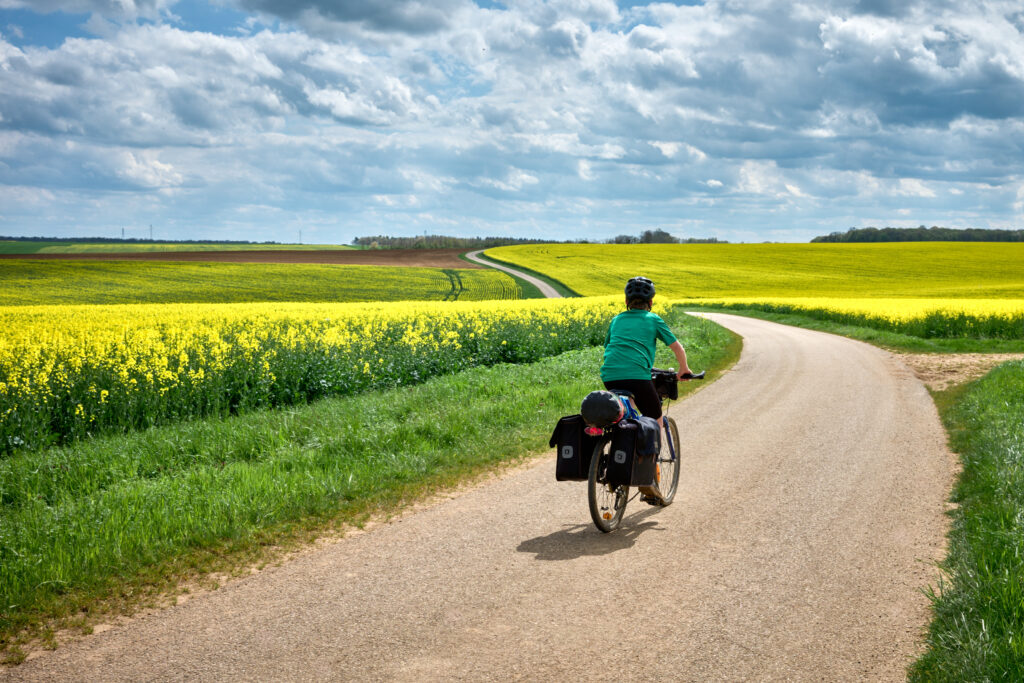
Over several days or weeks, France's most beautiful cycling itineraries allow you to discover the Hexagone pays at the heart of its landscapes. From high Alpine peaks to flat coastal paths, vineyards, canals, mountains and a multitude of other landscapes, these cycling routes are suitable for all levels. But they all have one thing in common: the promise of an unforgettable experience as you discover France's natural and cultural heritage.
1. The Vélodyssée
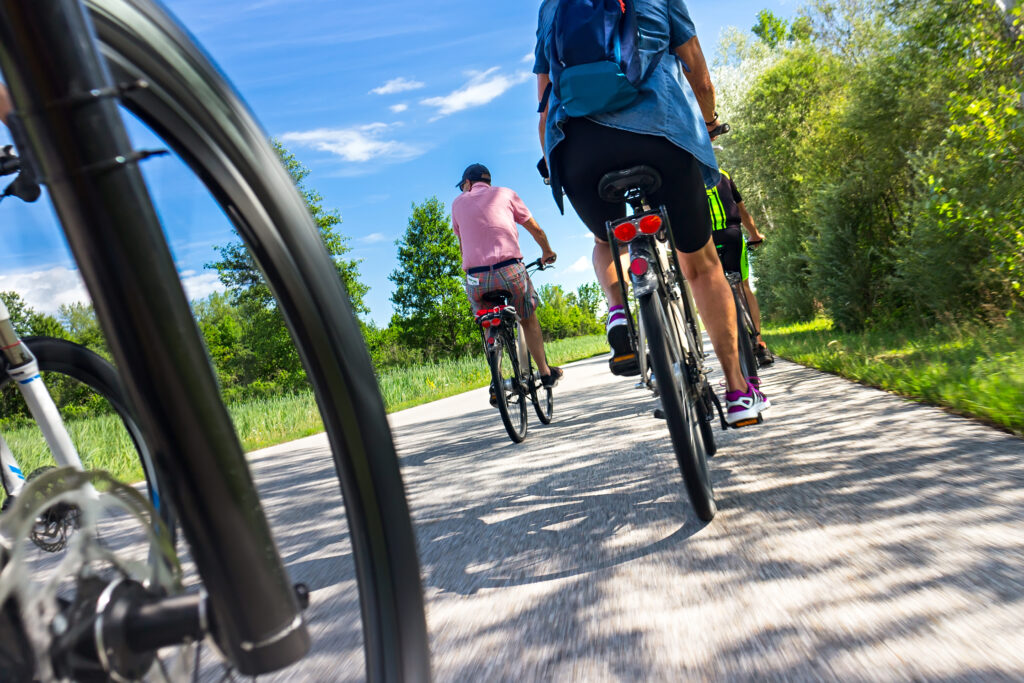
- Distance: 1,300 km
-Altitude difference: 2,500 m
EuroVelo 1 is a cycle route along Europe's Atlantic seaboard, passing through 6 countries: Norway, the UK, Ireland, France, Spain and Portugal. This makes it the longest cycle route in Europe. The French section, known as the Vélodyssée, stretches from Roscoff in Brittany to Hendaye in the Basque country. It offers wild, mainly coastal landscapes along the Atlantic coast, making it one of the most beautiful cycling routes in France.
The Vélodyssée may be long, but it's actually quite easy in terms of gradient, since it's mainly flat, except for the Basque section, which remains accessible. What's more, almost 80% of the route is cycleable, mainly on smooth asphalt. This makes it a mythical cycling route, ideal for families or beginners. However, be sure to follow the advice for your first cycling trip.
2. The Loire by bike
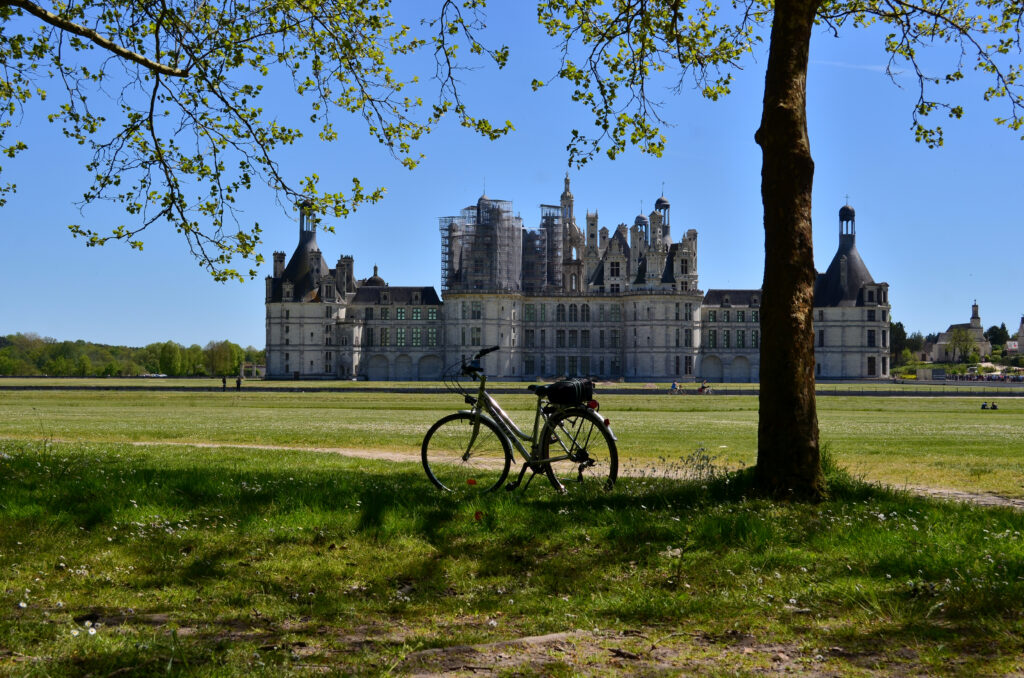
- Distance: 900 km
-Difference in altitude : 190 m
If this French cycle route is one of the most beautiful in France, it's because it follows the thread of a Unesco World Heritage site: the Loire Valley. From Cuffy, a town near Nevers, to Saint-Brevin-les-Pins, this 900 km-long route crosses no less than 6 departments in western France: Cher, Loiret, Loir-et-Cher, Indre-et-Loire, Maine-et-Loire and Loire-Atlantique. The route takes in the Loire châteaux, half-timbered houses and other typical regional landscapes.
Following the course of the river, this route is extremely flat. So it's perfectly feasible to do it as a family, even with children, by adapting the distance covered at each stage. Likewise, this is an ideal itinerary for novice cyclists, especially as it is France's first safe, signposted cycle route.
3. The Vélobuissonnière
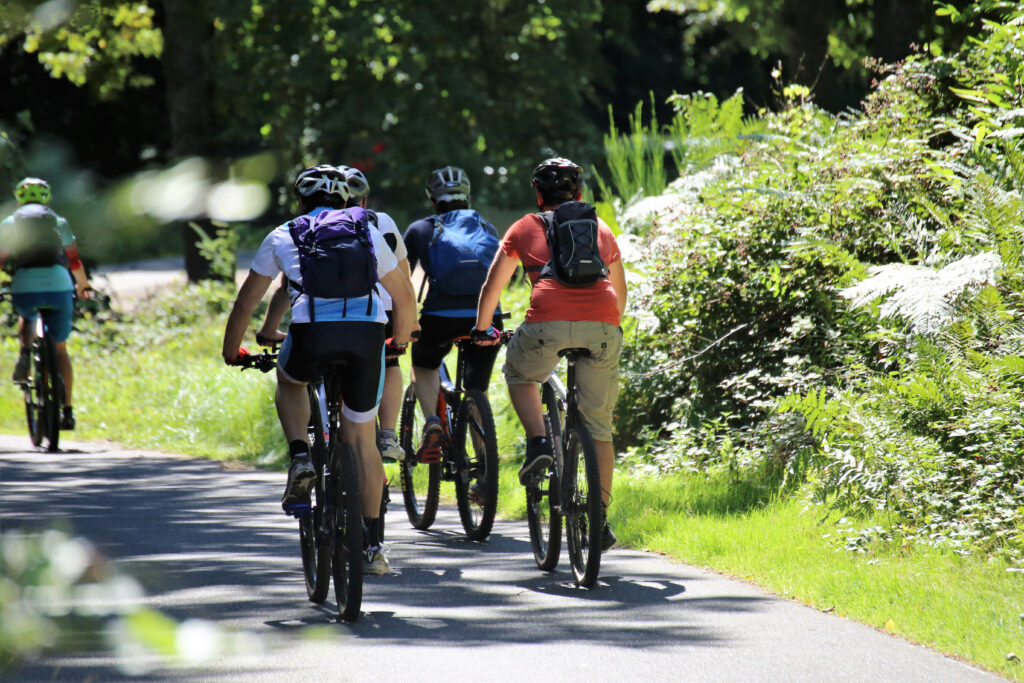
- Distance: 250 km
-Difference in altitude : 1,300 m
Here's another of France's most beautiful cycling itineraries, passing through Unesco World Heritage sites. More precisely, the Vélobuissonière links Alençon, with its intangible heritage lace, to Saumur, a Unesco World Heritage site in the Loire Valley. The cycle route crosses the Sarthe, Maine-et-Loire and Orne departments, stretching between the Pays de la Loire and Normandy. Along the way, you'll pass through charming villages and lush green landscapes.
This pleasant route is almost entirely on smooth surfaces. It does, however, require a little experience, as it passes through hilly landscapes, particularly near Alençon. It is therefore of medium difficulty.
4. The Grandes Alpes route
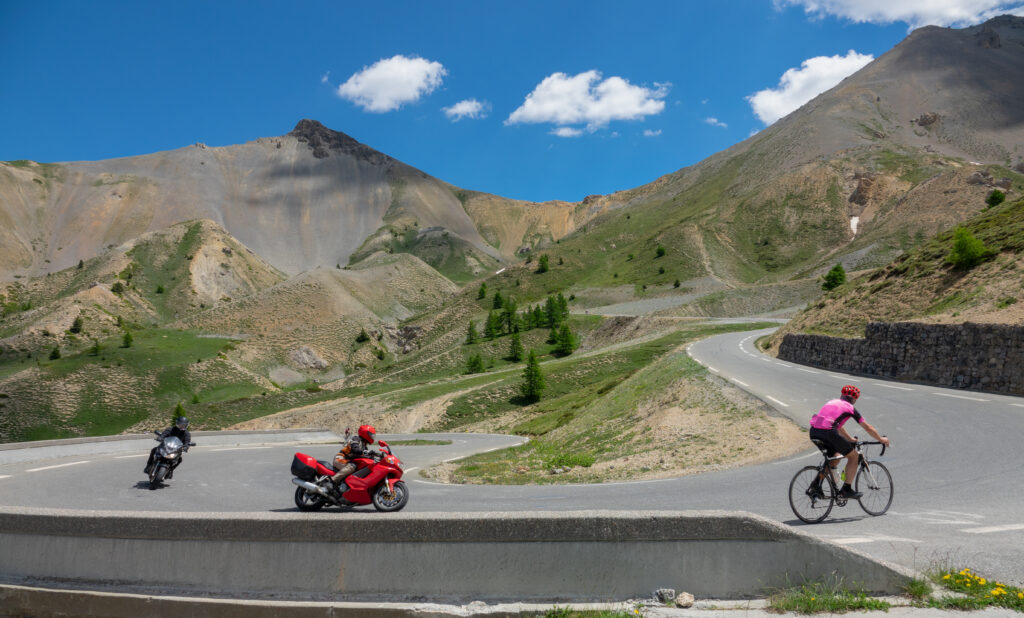
- Distance: 720 km
-Altitude difference: 17,000 m
As the name of this itinerary suggests, the Route des Grandes Alpes is particularly challenging, due to its steep gradients! Crossing the French Alps from north to south, this trail takes in no fewer than 17 mountain passes, including 6 at altitudes of over 2,000 m! Of course, these intense efforts will be rewarded by some absolutely sublime mountain scenery. Note also that the high altitude of this trail makes it an ideal cycling route in summer, as you won't be exposed to scorching temperatures. However, if you decide to cycle the Route des Grandes Alpes in July, make sure that the Tour de France doesn't compromise your plans.
To master the Route des Grandes Alpes, head for Thonon-les-Bains on Lake Geneva, where the route starts. Then, 720 km later, with your calves well and truly toned, you'll find yourself in Nice, on the Mediterranean coast, having had your eyes filled.
5. Cycling around Burgundy
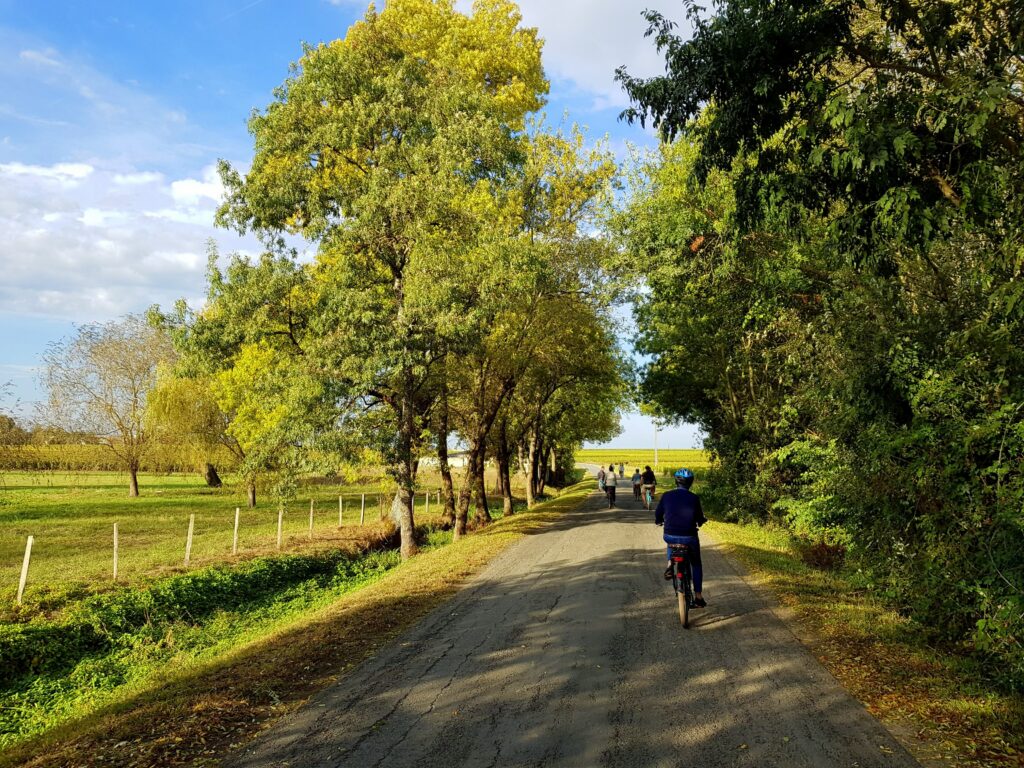
- Distance: 664 km
-Difference in altitude : 1,700 m
The Tour de Bourgogne by bike is one of the most beautiful cycling itineraries in France, not only for the vineyards and canals it crosses, but also for the rich historical and gastronomic heritage it offers. Burgundy is as famous for its vineyards as it is for its castles, picturesque villages and other fine dishes, starting with the famous boeuf bourguignon! There's plenty of choice food to satiate you after your efforts, as the Tour de Bourgogne by bike is a medium-level itinerary, due to the elevation changes offered by these undulating landscapes. It's a long way from the high peaks of the Alps, however, and the difficulty is not astronomical, and remains accessible with a little preparation.
The big advantage of this route is that it's a loop. It can therefore be climbed from a number of locations, including Dijon, the capital of Burgundy, as well as Beaune, Auxerre and Tonnerre, with its famous Fosse Dionne. Another advantage is that the Burgundy bike tour is mainly done on greenways, i.e. without cars, notably on towpaths running alongside canals.
6. The great TransVerdon crossing
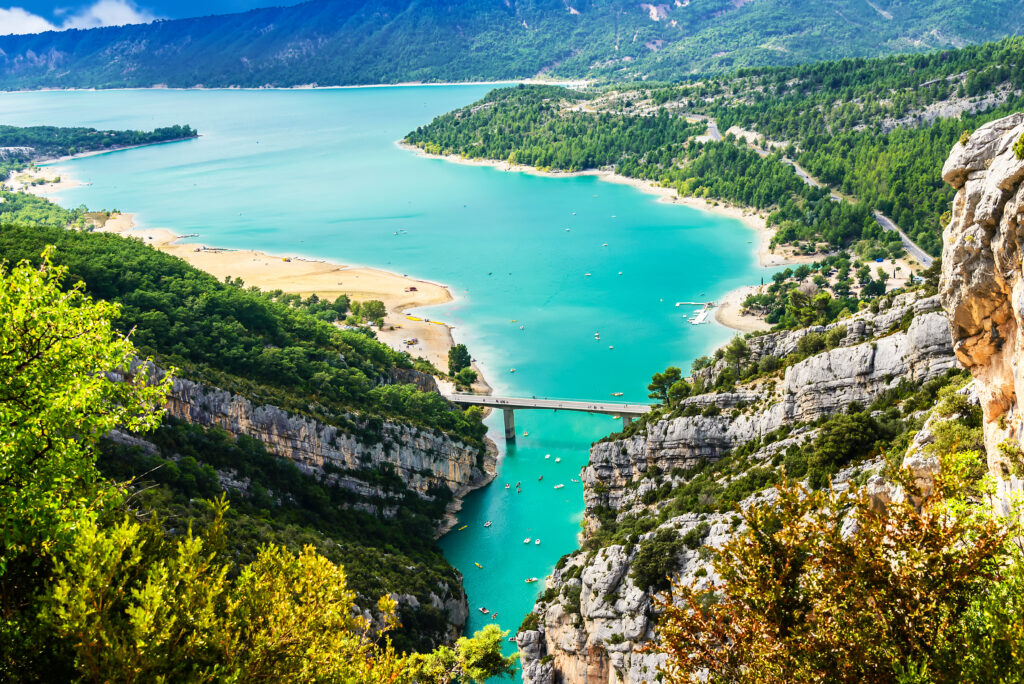
- Distance: 260 km
-Altitude difference: 7,300 m
La grande traversée TransVerdon is undoubtedly one of the most beautiful mountain bike routes in France. It requires a mountain bike, and gravels are not suitable, as it traverses stony, sometimes technical mountain landscapes, as well as steep slopes in places. It begins at the source of the Verdon, on the Col d'Allos, at an altitude of 2,247 m, and stretches as far as Gréoux-les-Bains, in the Mercantour National Park, after passing through the Lac de Sainte-Croix, considered one of the most beautiful in France. Following the Verdon valley, it offers swimming breaks all along the way, making it a great way to discover France by bike in summer.
The 30 to 40 km stages are particularly demanding, due to the region's steep gradients.
7. The Vélomaritime
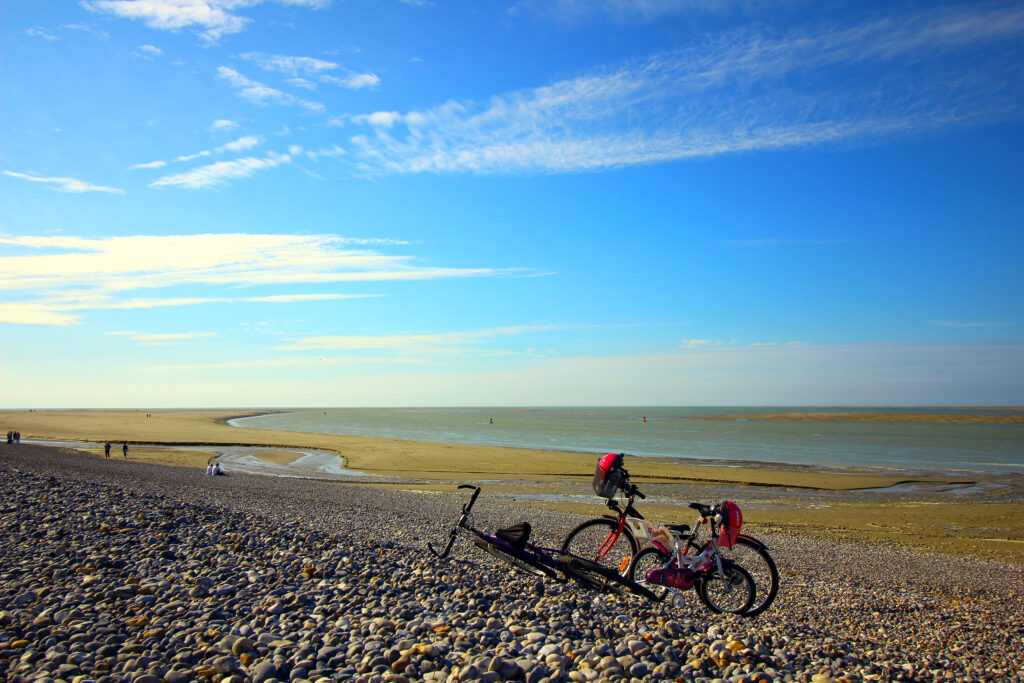
- Distance: 1,500 km
-Difference in altitude : 9,500 m
The Vélomaritime is the French section of EuroVelo 4, which stretches as far as Kiev in Ukraine. In France, it starts in Roscoff, Brittany, before stretching along the English Channel and the North Sea, ending at the Belgian border. It takes in a wide variety of landscapes, most of them coastal: Baie de Somme, Côte d'Opale, Côte de Granit Rose, Baie du Mont-Saint-Michel, the cliffs of Etretat, the D-Day landing beaches, and much more.
The route is relatively flat, with the exception of a few sections, notably the Grand Site des Deux Caps in the Pas-de-Calais. One disadvantage, however, is that just over half the route is shared with cars. For these reasons, this is a medium-level itinerary, requiring a bit of training, but not accessible only to serious cyclists.
8. The Scandiberica
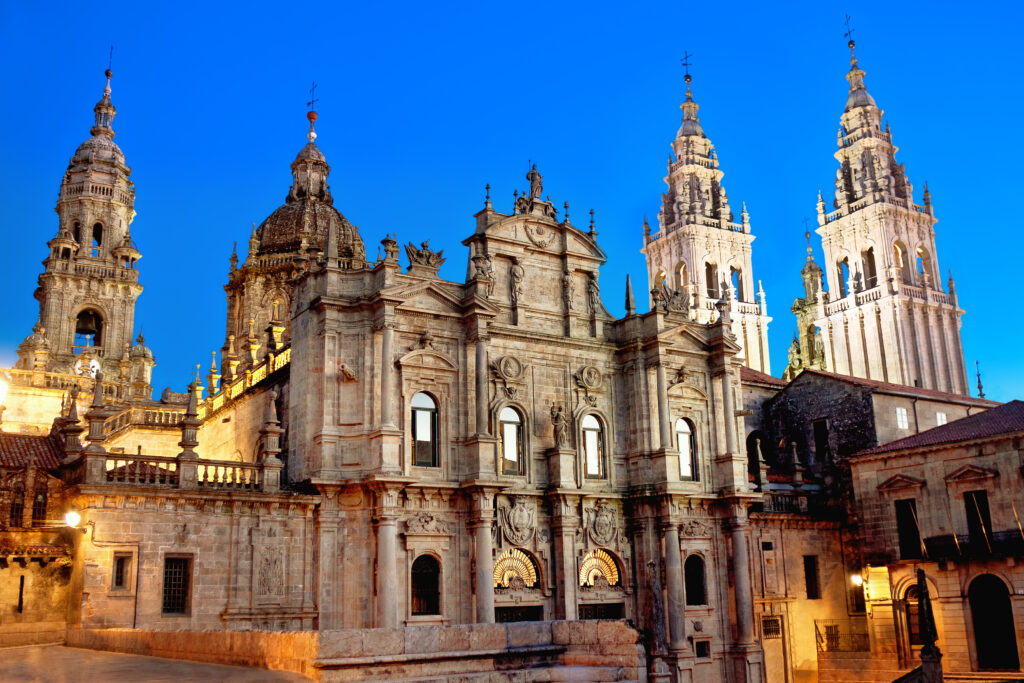
- Distance: 1,700 km
-Altitude difference: 7,000 m
Once again, the Scandiberique is part of a wider itinerary, namely EuroVelo 3, which starts in Norway and ends in Spain. It follows the route of several major European pilgrimages, ending in Santiago de Compostela. The French section, the Scandibérique, is quite long, requiring over a month's pedaling as it crosses France diagonally. It passes through several major cities, such as Paris and Bordeaux, but also through some exceptional natural landscapes.
The Scandibérique crosses 20 départements and 4 regions. It is not only one of France's most beautiful cycling itineraries, but also the country's longest cycle route. Difficulty varies greatly from stage to stage, but you' ll need to be a seasoned cyclist to complete this long itinerary in its entirety.
9. The Canal des 2 Mers by bike
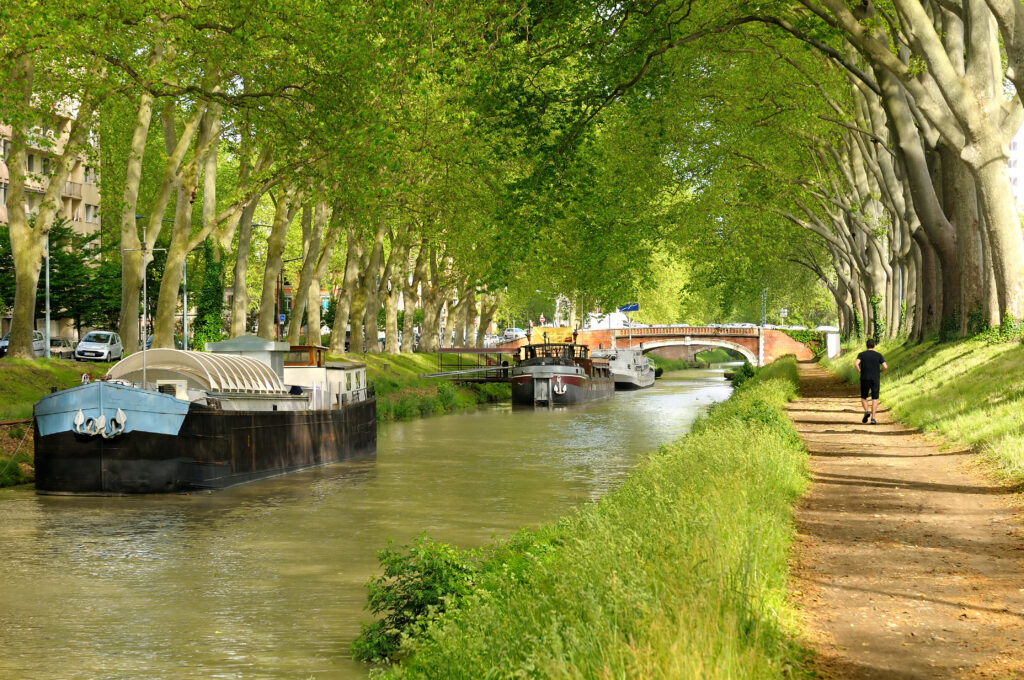
- Distance: 750 km
-Difference in altitude : 1,500 m
Linking the two main French coasts, the Atlantic and the Mediterranean, the Canal des 2 Mers à vélo is easily one of the most beautiful cycling itineraries in France. It takes in the typical landscapes of southern France, while passing through a number of major cities, notably Bordeaux and Toulouse. You'll cycle along legendary waterways such as the Gironde estuary, the Garonne and the Canal du Midi, a UNESCO World Heritage site.
This route, inaugurated in 2015, is still very new, and although it is mainly on greenways and smooth ground, some sections of the Canal du Midi are not yet developed. Of easy difficulty, this trail is mainly flat, except for a few sections in the middle of the route.
10. Vélo West Normandy
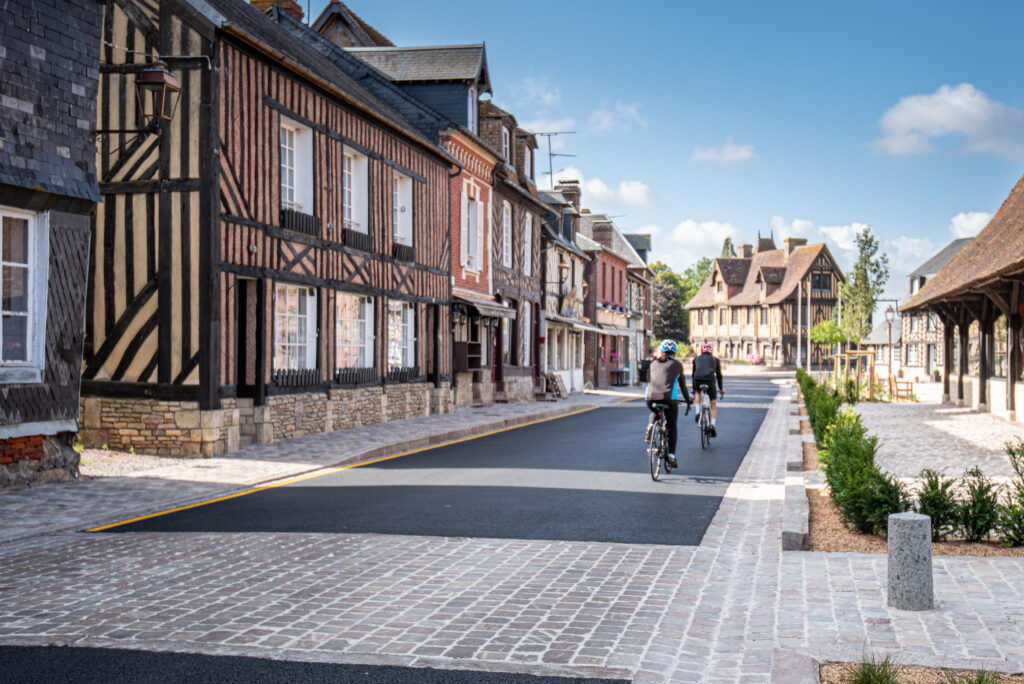
- Distance: 185 km
-Difference in altitude: 1,375 m
The Vélo West Normandy cycle route has been designed not only to take in the scenery, but also to provide an insight into French history. Indeed, it guides cyclists in the footsteps of the Battle of Normandy, via the D-Day landing beaches.
This is the Normandy section of the Vélomaritime. It passes through green meadows grazed by cows and other typical Normandy landscapes. It is divided between cycle lanes and shared lanes. In terms of difficulty, it doesn't require a great deal of cycling experience, and is mainly flat.
11. The Mediterranean by bike
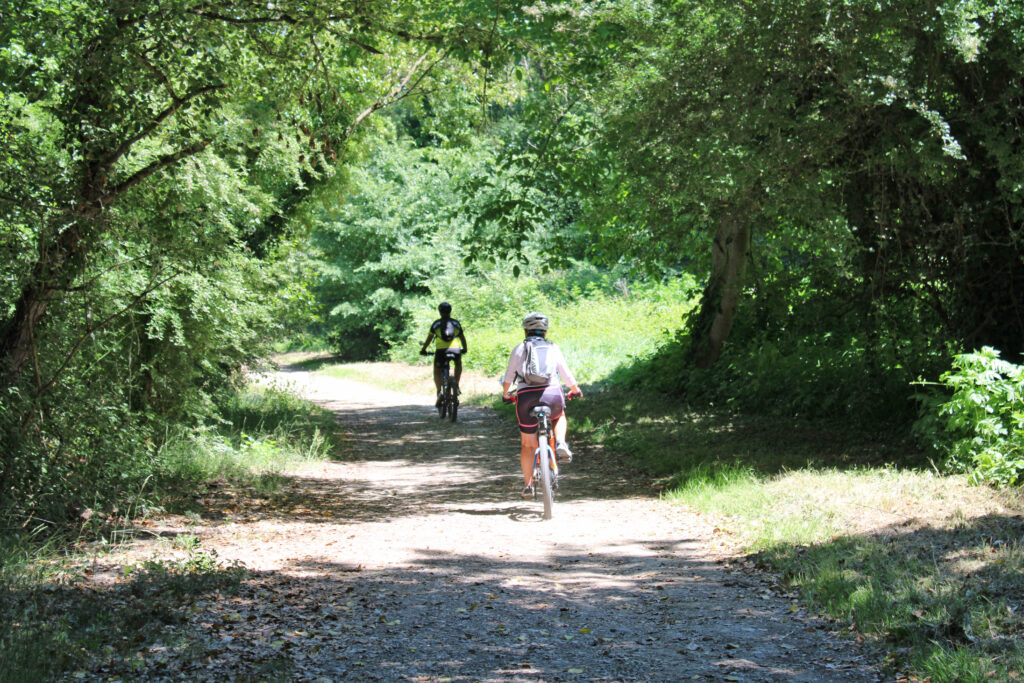
- Distance: 850 km
-Difference in altitude : 5,000 m
The French section of EuroVelo 8 is aptly named the Mediterranean by bike, stretching from Menton to Perpignan. It is fairly uneven in terms of difficulty, starting in the Pyrenees and ending in the Alps. It therefore includes some gradients at the beginning and end of the route, but not much in the middle.
Cycling along the coast, the Mediterranean by Bike route passes through numerous tourist destinations and seaside resorts, making it one of the most beautiful cycling itineraries in France.
12. The Somme Valley cycle route
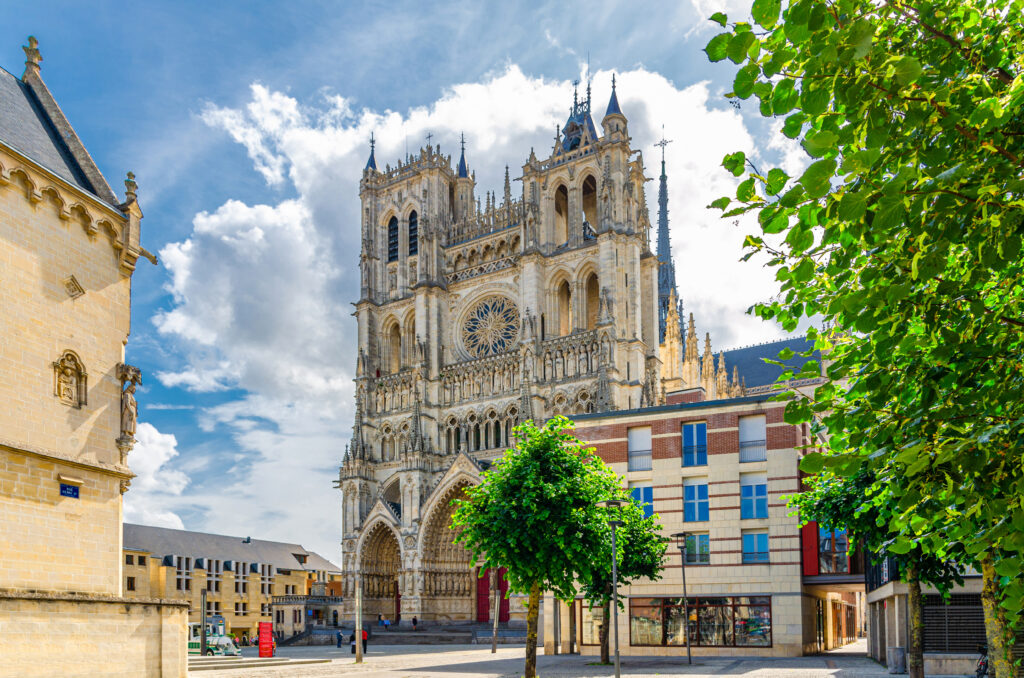
- Distance: 195 km
-Difference in altitude : 226 m
This completely flat route is perfect for those allergic to hills! This makes it an ideal route for families, or for novice cyclists. Especially as the Somme Valley cycle route is mainly on cycle paths. It starts in Tergnier, and 200 km later reaches Saint-Valéry-sur-Somme and the famous Baie de Somme.
Mainly along the water's edge, between towpaths, marshes and ponds, this route takes in some marvellous scenery. It also passes through historic towns such as Amiens, with its famous cathedral.
13. La Véloscénie
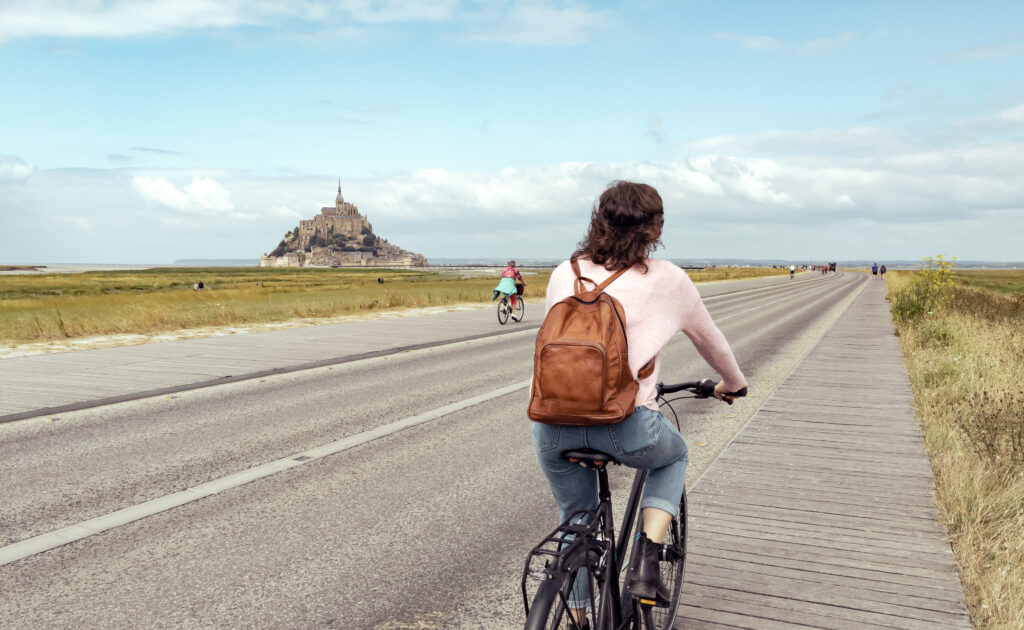
- Distance: 450 km
-Difference in altitude: 3,200 m
Parisians, too, are entitled to their share of France's most beautiful cycling itineraries! The Véloscénie connects two of France's most famous tourist attractions: Paris and Mont-Saint-Michel. The route takes in a wide variety of landscapes, from Chartres and its famous cathedral to the pastures of Normandy. This makes it, without a doubt, the most beautiful bike ride to start from the capital.
It includes sections of varying degrees of difficulty, making it a medium-level route overall. Half the route is divided between cycle lanes and shared roads. It offers the advantage of being mainly on smooth ground.
14. La grande traversée du Jura by bike
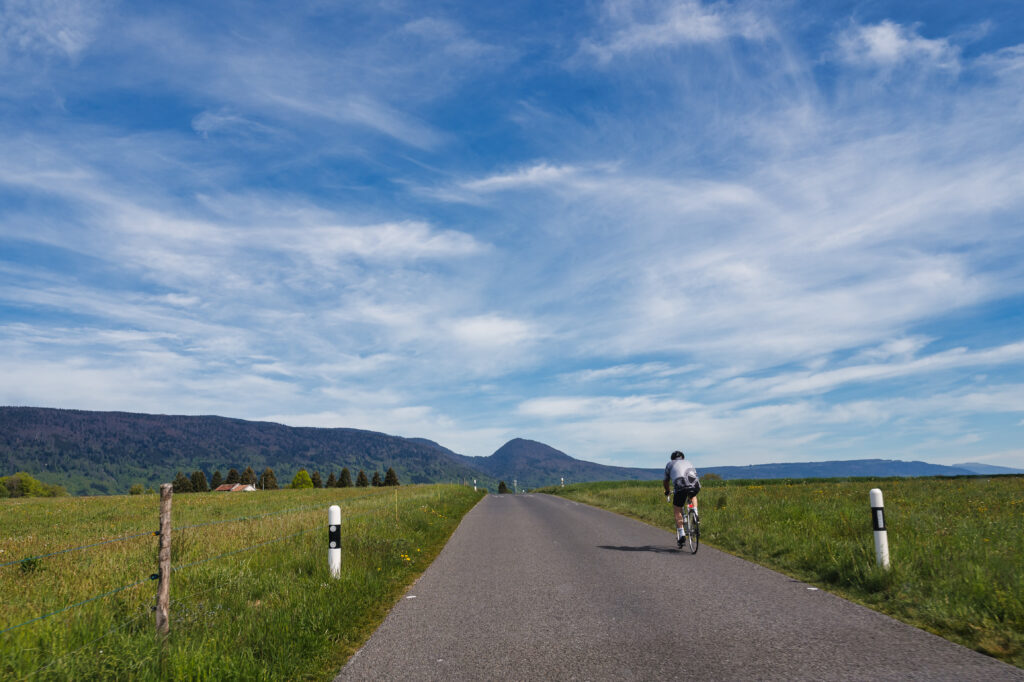
- Distance: 375 km
-Difference in altitude: 6,650 m
Please note: this superb route crosses the Jura Massif, and therefore offers a good mid-mountain gradient, which should be reserved for the most experienced cyclists. But it's well worth the effort, as the Jura 's valleys, forests and plateaus offer some of the wildest scenery in France.
This itinerary has the drawback of being almost exclusively on shared roads with cars. Despite this, it's a far cry from concrete landscapes, as the GTJ, as it's known to friends and family, passes through nature reserves, the Haut-Jura regional nature park, skirts rivers, lingers in front of waterfalls, and even takes in mountain cirques.
The great Jura crossing stretches between Montbéliard, a pretty Comtoise town with a superb château, and Culoz. In between, there are a number of other towns worth a visit, including Morteau, the watchmaking capital and famous for its sausage, Pontarlier, and Mouthe, the coldest town in France!
Since 2021, there has also been a small GTJ, a 250 km loop.
15. The Meuse by bike
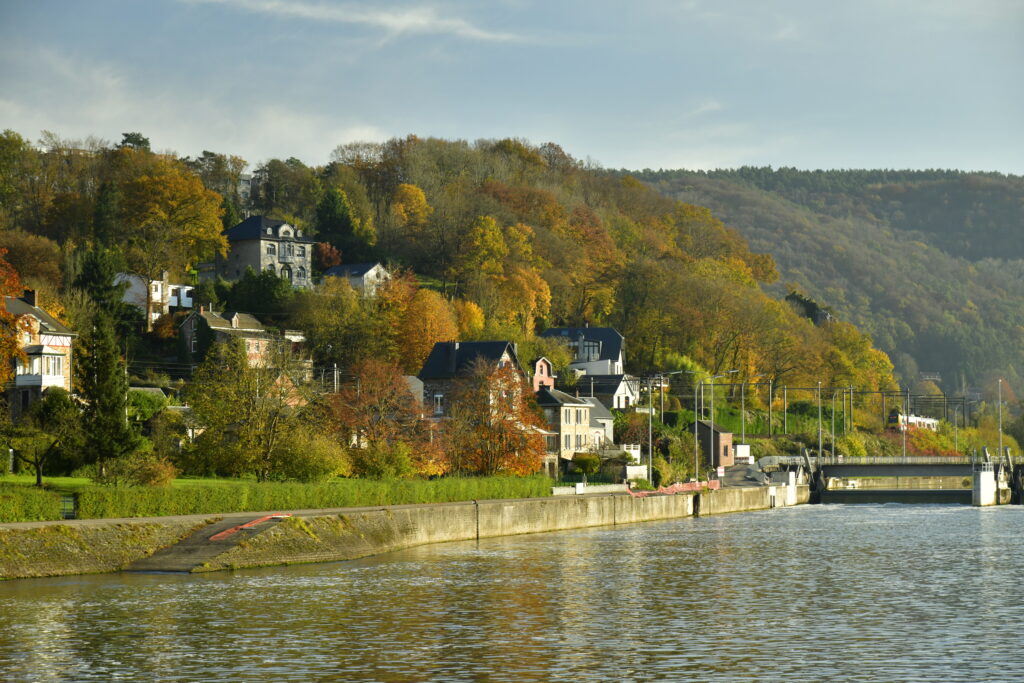
- Distance: 443 km
-Difference in altitude: 1,929 m
Although the Meuse à vélo is part of the 1,000 km EuroVelo 19, this 450 km section is only in France. This water-filled cycle route allows you to discover the Meuse valley and its rich heritage, both natural and cultural. It passes through historic towns such as Charleville-Mézières and its ducal square, Sedan and its fortified castle, and Verdun and its battlefields.
Starting from the south, i.e. from Langres, the route is mainly slightly downhill. But some sections have a slight gradient, and the route is mainly on shared roads, making it a medium-level ride. It offers the advantage of being exclusively on smooth ground.


